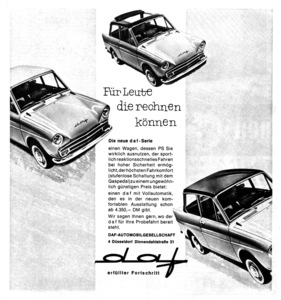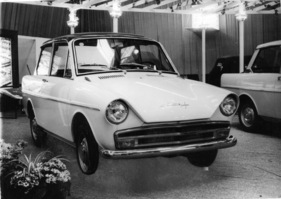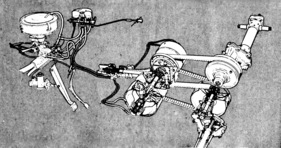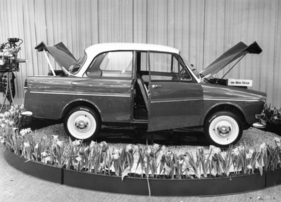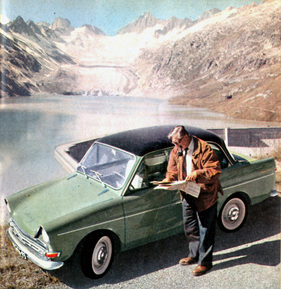Torn at the straps - DAF Daffodil in a historic test
Summary
The truck manufacturer from Eindhoven had not yet hit the bull's eye with the DAF 600 in 1959. Although the idea of the Variomatic was good, its implementation in the passenger car was not yet fully developed. This changed in 1961 when the revised successor, the Daffodil, was launched. With its continuously variable belt transmission, the 26 hp little car offered the driving comfort of a large American, at least in city traffic. This historical test report explains how the Variomatic works and identifies the strengths and weaknesses of the DAF Daffodil.
This article contains the following chapters
- Multi-cylinder running culture
- From pulleys and belts
- Goblin with a timer
- 50 percent payload
- Heating for alcoholics
- The future belongs to the automatic
- Technical data & measured values
Estimated reading time: 14min
Preview (beginning of the article)
Red - yellow - green - and off goes Lützow's wild and daring chase, at least in most cases. Young hotshots in particular enjoy the traffic light starts and the subsequent 100 m races - "I'll leave any Mercedes standing with my souped-up Goggo". The majority of drivers, on the other hand, regard these forced stops at red lights as extremely annoying and then behave in the same way as one would towards a constantly recurring evil: grumpy, irritable, nervous. The car immediately adapts to its master's mood and sometimes reacts in a sneaky way: despite the use of brute force, first gear can only be engaged when the green phase has just ended. A quick attempt to start off is nipped in the bud by the handbrake, which has not been released in the excitement, and the car jumps in an offended manner, thus clearly showing all road users: stalled.
Continue reading this article for free?
Photos of this article



















